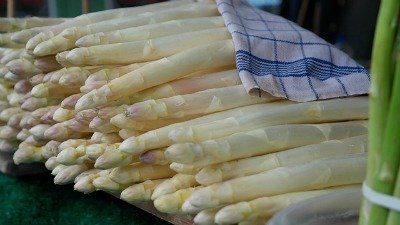Stem vegetables (vegetable crops) are those food plants from which edible botanical stems are harvested for use in culinary preparations.
They can be divided further into those with edible stems that are above ground and those with modified underground stems.
Swollen modified stems, such as bulbs, tubers, corms, and rhizomes, serve as the main food storage organs.

Crop plants that are grown for their starchy roots, tubers, and corms are called root and tuber crops.
They are generally placed under the domain of agronomy.
But as to human consumption, they can be considered vegetables under horticulture.
Examples of these vegetable crops, without considering geographical adaptation and distribution, are provided in the table below.
The botanical names, family, and other relevant information are supplied.
The names of the underground storage organs of root and tuber crops were checked with the list provided by Kawakami (1978) and the current family names were confirmed with Simpson (2010).
Take note that the listed stem vegetables belonging to the same botanical family have the same kind of modified underground stem.
For more enlightenment on starchy root and tuber crops, click here.
List of Stem Vegetables
Table LV-2. List of stem vegetables with their scientific names, family, and other information.
| CROP NAME | SCIENTIFIC NAME | FAMILY | COLLECTIVE NAME FOR MEMBERS OF THE FAMILY, OTHER INFO |
| Stem Vegetables | |||
Examples of stem vegetables with edible aboveground stems: | |||
| Asparagus | Asparagus officinalis | Asparagaceae | Asparagus family, but formerly under Liliaceae (Merrill 1912); the edible part is the young shoot commonly called “spear,” best consumed when the tip is still tightly closed. |
| Bamboos | various species | Poaceae/Gramineae | Grass family; the edible part is the young, newly emerged shoot. |
| Kohlrabi | Brassica oleracea var. gongylodes | Brassicaceae/Cruciferae | Mustard family, also called Cole Crops and Crucifers; the main consumable plant part is the basal stem which forms a spherical structure. |
| Potato vine, kangkong | Ipomoea aquatica | Convolvulaceae | Morning Glory/Bindweed family; both stems and leaves are eaten cooked or blanched. |
Examples of stem vegetables with edible modified underground stem called bulb: | |||
| Chive | Allium schoenoprasum | Amaryllidaceae | Amaryllis family; formerly under Liliaceae (Lily family, Merrill 1912) but Simpson (2010) preferred it under Alliaceae (Onion family or alliaceous crops); Alliaceae has been placed within an expanded Amaryllidaceae by the Angiosperm Phylogeny Group III (APG III, 2009). |
| Garlic | Allium sativum | Amaryllidaceae | Amaryllis family |
| Allium porrum | Amaryllidaceae | Amaryllis family | |
| Onion | Allium cepa | Amaryllidaceae | Amaryllis family |
| Shallot | Allium cepa, Aggregatum group | Amaryllidaceae | Amaryllis family |
Examples of stem vegetables with edible modified underground stem called tuber: | |||
| Jerusalem artichoke | Helianthus tuberosus | Asteraceae/Compositae | Sunflower or Aster family |
| Potato | Solanum tuberosum | Solanaceae | Nightshade family also called Solanaceous crops |
| Yam, ube | Dioscorea alata | Dioscoreaceae | Yam family |
| Asiatic yam, tugui, apali, tam-is | Dioscorea hispida | Dioscoreaceae | Yam family |
Examples of stem vegetables with edible modified underground stem called corm: | |||
| Taro, gabi | Colocasia esculenta | Araceae | Arum family; some varieties are grown for their edible leaves and petioles and modified lateral stems (stolons) |
| Yautia, tannia, bisol, karlang, palauan | Xanthosoma sagittifolium | Araceae | Arum family |
REFERENCES
- HILL A. 1972. Economic Botany. 2nd ed. New Delhi: Tata McGraw-Hill Publishing Co. Ltd. 560 p.
- KAWAKAMI K. 1978. Physiology of yield of underground storage organs. In: Gupta US, ed. Crop Physiology. New Delhi: Oxford & IBH Publishing Co. p. 269-309.
- MERRILL E. 1912. Flora of Manila. Manila: Bureau of Printing. 491 p.
- PEEL L. 2004. HarperCollins Practical Gardener: Kitchen Garden. New York, NY: HarperCollins Publishers Inc. 176 p.
- SIMPSON MG. 2010. Plant Systematics. 2nd ed. San Diego, CA: Elsevier Inc. 740 p.
- The Essential Gardening Encyclopedia. 2003. San Francisco, CA: Fog City Press. 608 p.

I have just started to read the blog, and it is really interesting and informative. Thank you for sharing!